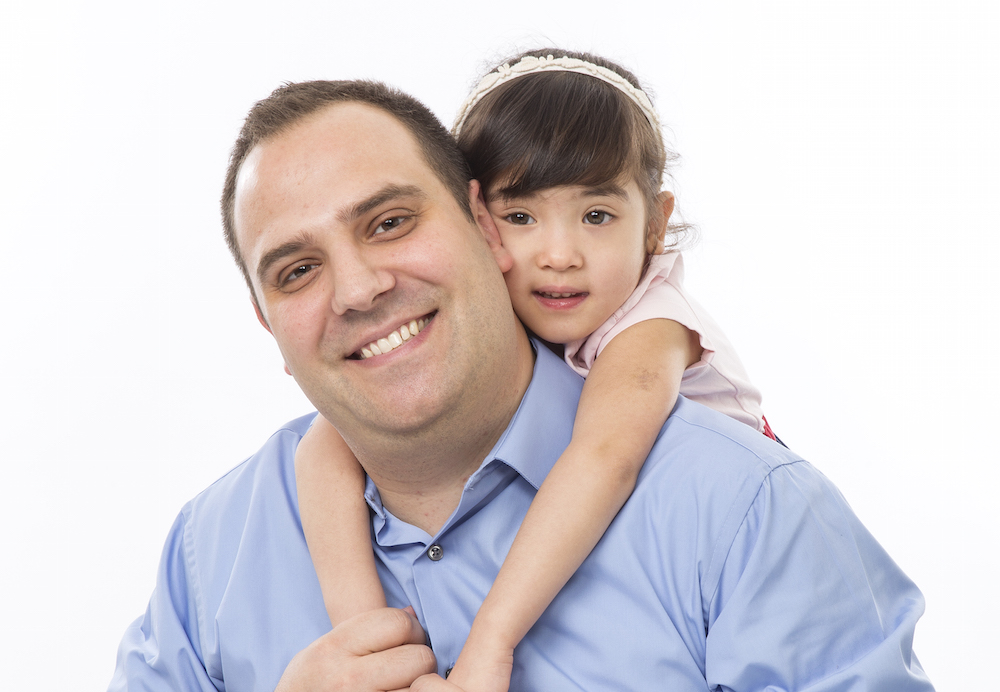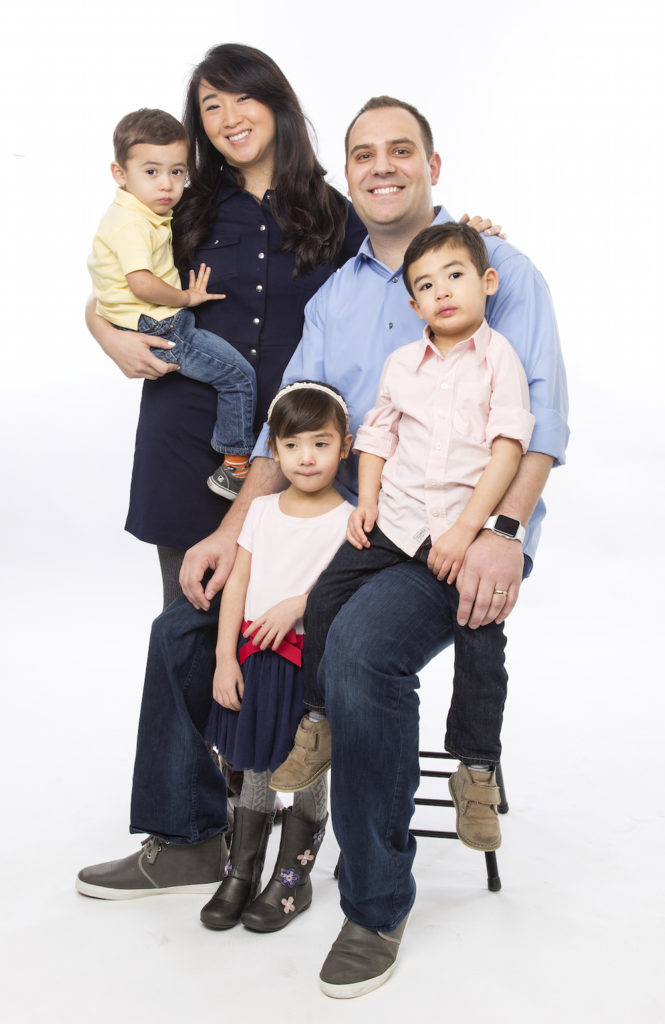
Felipe Estrela thought things couldn’t get tougher when he was diagnosed with a rare soft tissue cancer called biphasic synovial sarcoma in 2014. Then, shortly after having a tumor the size of a small football removed from his right leg, the 29-year-old faced a new challenge: an above-the-knee amputation.
A husband and father of three children under age 2, Estrela had to adjust to both life-altering events at once. He credits his wife, Julia, and caregivers at Dana-Farber/Brigham and Women’s Cancer Center (DF/BWCC) with helping him through, and below offers tips to others dealing with the loss of a limb due to cancer.
Muscle-up pre-surgery. Strengthen and condition the muscles you’ll need to compensate for your amputation, and if you’re not sure which muscles those are, or how to strengthen them, ask your doctor. These muscles will atrophy a bit during recovery, so the stronger you can get them now, the better.
Get ready mentally. When you wake up after surgery, you’re immediately facing a new life. You need mental toughness and preparation to convince yourself not only that you can do it, but why you’re doing it: to survive your cancer. I watched a lot of YouTube videos of people living their everyday lives with prosthetic legs, to get a better image of what it was going to be like.

Fight phantom pain. For about a year after surgery, you might have shooting “phantom pain” where your leg or arm used to be. There are a lot of things you can do to stop it: Apply pressure to the stump (residual limb) with a wrap or shrink socks, or squeeze it with your hand to convince your brain that this is what is left. I used to put ice on the end of my limb all the time, which helped. Some people take a mirror, position it where they can see their “good” limb, and then move it around to try to convince their brain which feelings are in the “real” limb.
Choose your prosthetist carefully. Few people are more intimately involved in your care and recovery than your prosthetist, since you’ll likely pick out and get fitted for several artificial limbs and sockets in the first few years after amputation. Because this is such a crucial relationship, it’s worth interviewing several prosthetists. Experience is great, but so is a strong personal connection – you need to trust that this person will be your best advocate.
Find a “both sides” peer: There are great support groups for cancer patients survivors at Dana-Farber, but try to find someone who has also lost a limb. They can really understand the fears, sense of loss, and challenges you’re facing. I found a mentor who was an arm amputee, but because she had cancer too, we bonded wonderfully.
Connect with a counselor. You are entering a “new normal” where people will be viewing you differently, no matter how much they love you. It’s a lot to handle between the physical rehab for your new limb, side effects of cancer treatment, and the emotional impact it all has on you. A professional therapist can be pivotal in getting you back to life.

Laugh. I’ve found cracking jokes helps people feel less awkward around me and makes me feel better at the same time. The best is when others start doing it. Once I was out with some coworkers, had a few drinks, and when I left to go home someone said, “You’re on your last leg – literally.” That was classic.
Have patience and perseverance. Having the patience to start all over again with so many simple tasks was really hard. Remind yourself that recovery will come, but it will take persistence. Don’t be afraid to ask for help, but try to get out of your comfort zone and not let others do everything for you.
Fall on the floor. Every amputee is afraid of falling down; it’s inevitable. But when you know you’re going to fall, it becomes easier. Ask yourself, “What am I afraid of?” Then just get back up.
